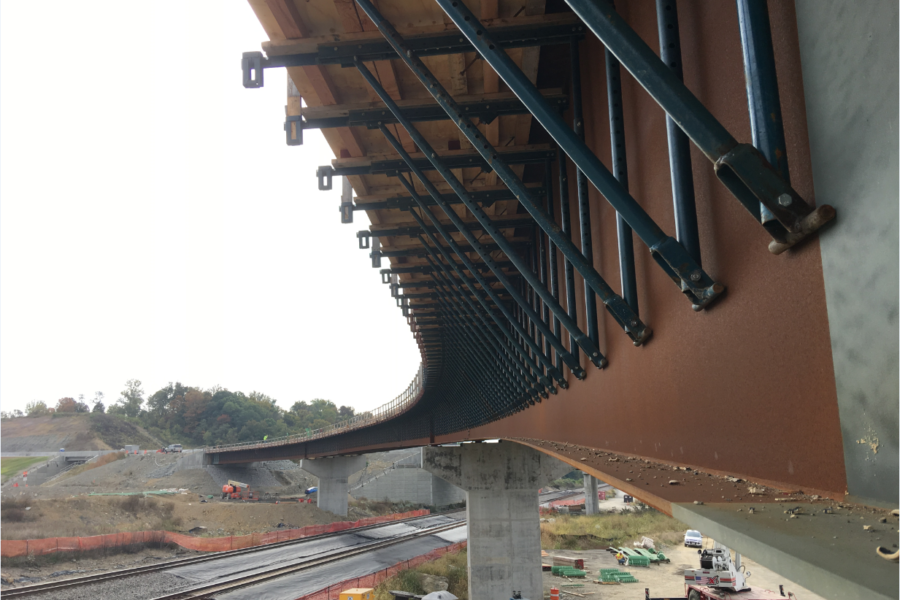
AspireBook_Spring 2014_Zilwaukee
The Zilwaukee Bridge, a 1.5-mile-long twin concrete segmental structure, carries I-75 traffic over the Saginaw River. All Photos: Michigan Department of Transportation.

The Zilwaukee Bridge, a 1.5-mile-long twin concrete segmental structure, carries I-75 traffic over the Saginaw River. All Photos: Michigan Department of Transportation.
ZILWAUKEE BRIDGE / ZILWAUKEE, MICHIGAN
BRIDGE REPLACEMENT CONSULTANT: T.Y. Lin International, San Francisco, Calif.
QUALITY ASSURANCE ENGINEER: Janssen and Spaans Engineer Inc., Chicago, Ill.
CONSTRUCTION ENGINEER: Corven Engineering Inc., Tallahassee, Fla.
PRIME CONTRACTOR: PCL Construction, Tampa, Fla.
POST-TENSIONING CONTRACTORS: PCL Construction, Tampa, Fla., and Walter Toebe Construction, Wixom, Mich.
12 | ASPIRE, Spring 2014
The challenges associated with the bearing replacement were clear. Loads approaching 17 million pounds would have to be jacked from piers with heights up to 130 ft. Then, new, higher capacity bearings would have to be installed into the existing openings with little to no allowable modifications to the structure.
Loads approaching 17 million pounds would have to be jacked from piers with heights up to 130 ft.
The old expansion joint bearings rested on reinforced, cantilevered concrete corbels containing the anchorages for the post-tensioning. Therefore, any modifications to the concrete corbel to gain additional space was limited to the 2 in. of concrete cover above the reinforcing steel. The existing opening housing the expansion joint bearings provided approximately 4 in. of space from corbel to top plate. The top plates were salvaged because they were cast into the upper segment and were in sound condition. This lack of space also meant a higher-capacity and taller pot- style bearing would not be able to be used.
The pier bearings rested directly on top of each pier with a cast-in- place concrete plinth between the top of bearing and bottom of the superstructure. Plinth modifications were made to accommodate various bearing depths. Jacking stresses and load path redistribution were addressed by application of additional external post-tensioning forces via post-tensioning bars and walers to the elements affected. Some of the affected elements required an additional 2.5 million pounds of compression to prevent excess principal tensile stresses during jacking.
 Press Releases
Structural Technologies Announces Strategic Partnership with RJ Watson, Inc.
Press Releases
Structural Technologies Announces Strategic Partnership with RJ Watson, Inc.
 Press Releases
Portsmouth Bypass Disktron Installation
Press Releases
Portsmouth Bypass Disktron Installation
RJ Watson is a diversified design and manufacturing company that combines the power of innovation with engineering and fabrication to constantly improve what is essential to meet the demanding needs of the heavy construction industry.
